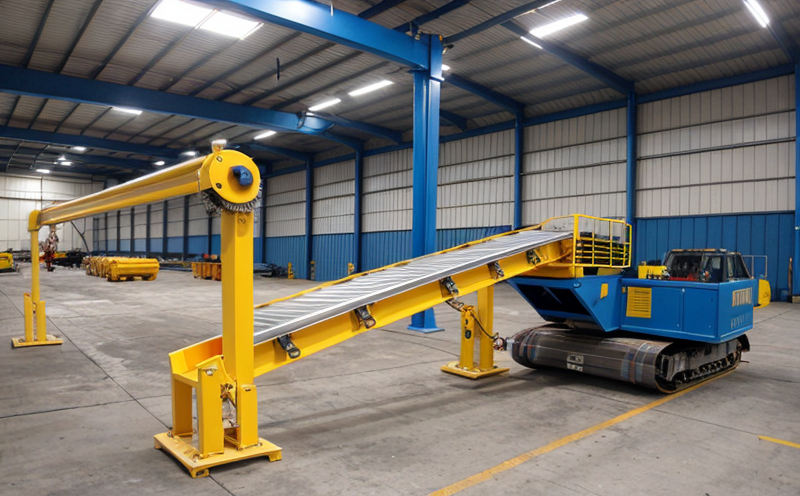EN 17067 Overload Protection Systems Testing for Lifting Machinery
The testing of overload protection systems in lifting machinery is critical to ensuring the safety and reliability of such equipment. The European Standard EN 17067 provides a framework for the testing of these systems. This standard is particularly relevant in sectors such as mining, where heavy-duty lifting machinery is essential for operations.
The primary focus of EN 17067 lies on ensuring that overload protection systems function reliably under various conditions. The test covers static and dynamic loading scenarios to evaluate the system's performance accurately. These tests are vital because they ensure that in case of an overload, the protective measures operate correctly without causing damage to the machinery or risking operator safety.
The testing process involves several key steps. Initially, the lifting machinery must be set up according to the manufacturer’s specifications and undergo a visual inspection for any defects. Then, the load cells are calibrated to ensure accurate measurement of loads during the test. The overload protection system is subjected to various loading conditions that simulate real-world scenarios. This includes sudden and gradual overloads to assess how well the system responds.
During testing, real-world parameters such as temperature variations, vibrations, and environmental factors must be controlled or accounted for in the test setup. Proper specimen preparation involves ensuring that the lifting machinery is clean and free from any external contaminants that could affect the test results. The instrumentation used includes load cells, strain gauges, accelerometers, and other sensors to monitor critical parameters.
The testing apparatus typically consists of a dedicated test rig designed to simulate the operational environment of the lifting machinery. This rig may include a gantry crane or hoist with adjustable loads capable of replicating different overload conditions. The rig must be calibrated periodically to ensure accuracy in load measurement and system performance evaluation.
After completing the tests, the data is analyzed for compliance with EN 17067 requirements. Acceptance criteria for this standard are stringent and include the ability of the overload protection system to activate within a specified time frame when subjected to defined overloads. If the tests indicate any non-compliance, corrective actions must be taken until all requirements are met.
One important aspect is the real-world usage notes that highlight how these tests contribute to overall safety in mining operations. For instance, ensuring the correct operation of overload protection systems can prevent catastrophic failures during heavy lifting tasks. This not only protects the machinery but also safeguard the lives of operators and nearby personnel.
| Test Condition | Description |
|---|---|
| Static Overload Test | The system is tested under a static load that exceeds its rated capacity by 120% for at least 5 minutes. |
| Dynamic Overload Test | The system is subjected to an impulse load equivalent to twice the rated lifting capacity in less than one second. |
| Vibration Test | The machinery is exposed to a controlled vibration environment to ensure stability during operation. |
| Temperature Variation Test | The system operates under temperature variations from -20°C to +45°C to verify its robustness against environmental changes. |
Applied Standards
The standard referenced here is EN 17067. This European Standard provides the methodology for testing overload protection systems in lifting machinery. It ensures that these critical safety features function reliably under various stress conditions.
| Standard Reference | Description |
|---|---|
| EN 17067-1 | General Requirements for Overload Protection Systems in Lifting Machinery |
| EN 17067-2 | Testing Methods for Overload Protection Systems in Lifting Machinery |
| EN 17067-3 | Evaluation Criteria for Overload Protection Systems in Lifting Machinery |
Frequently Asked Questions
International Acceptance and Recognition
EN 17067 is widely recognized for its stringent testing procedures that ensure the safety of lifting machinery.
This standard is accepted in numerous countries, including those within the European Union and beyond. Its acceptance enhances cross-border operations and compliance with international standards.
The international community values EN 17067’s role in promoting best practices for testing overload protection systems in lifting machinery.





